Where Land meets Sea: More North Sea Horizons
... meaning more pic spam.
The meeting of Land and Sea, ebbtide and flood, is endlessly fascinating. The land goes very flat into the sea here, which means that wide parts of sea ground fall dry at each ebbtide. This is one main factor for the developement of the wadden sea with it's unique and highly specialized flora and fauna.
Wherever the opportunity arises, plants claim a place on sanddunes that rise high enough to withstand the daily flood. Here is a sandbank overgrown.
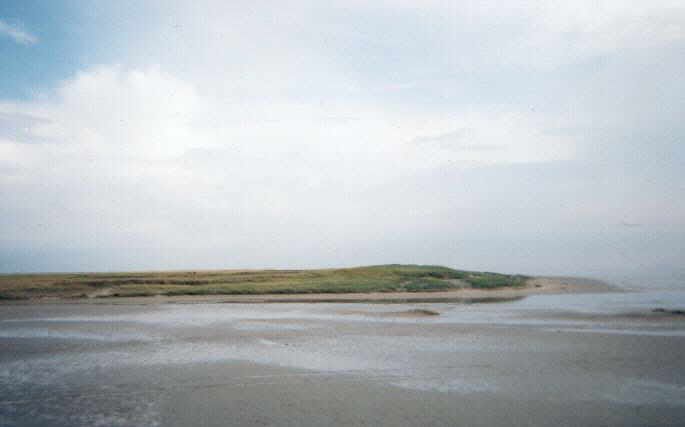
Pioneer plants grow in the muddy ground of the wadden sea close to the land. They must survive underwater as well as dry, and be able to cope with the salt. The whitish lines are where the water runs in and out during flood and ebbtide. They are called Priele. If you wander out into the wadden sea, it's essential to cross every Priel between yourself and dry land before flood is too high, because the current can be very strong.
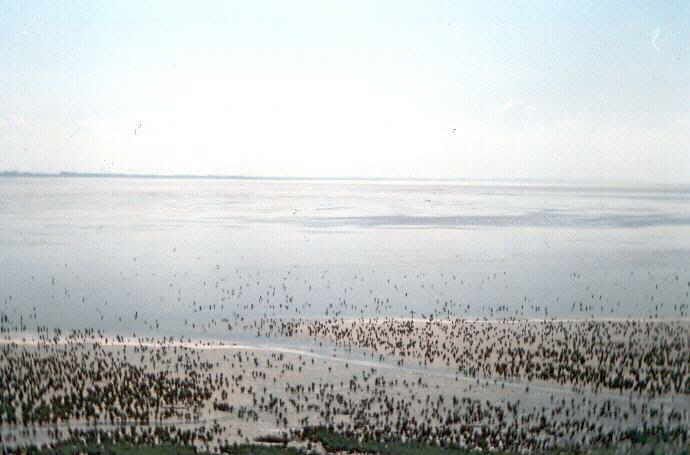
A close up. This is a plant called 'Queller' in the foreground, in the background is more Queller and a specialized kind of grass. While the foreground Queller gets flooded twice daily for six hours, the background plants get flooded not so often, only sometimes. Queller is eadible by the way, tastes salty and is soft and watery. (Who'd guessed?)
This plants remind me of pictures of prehistoric times, when water plants first conquered the land.
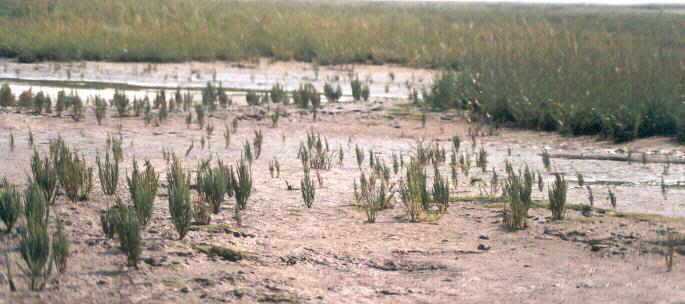
A salt meadow during a stronger than usual flood.
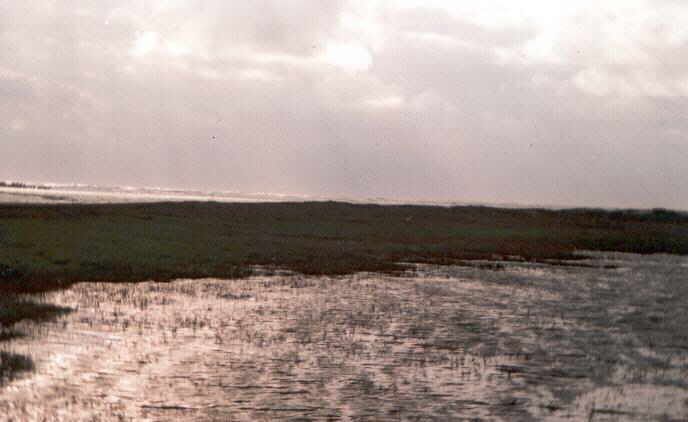
A detail of the salt meadow above, viewed from above. You can see various plants, some of them flowering. They survive a flood of saltwater now and then just fine, as long as it is not twice everyday.
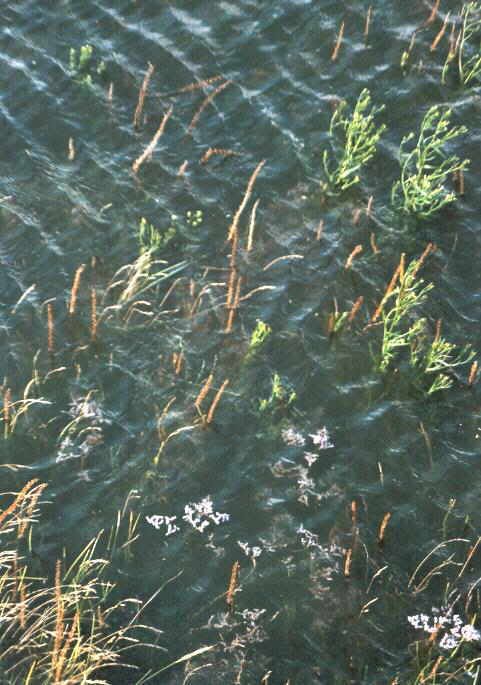
Next part coming soon: many sheep and one hare.
The meeting of Land and Sea, ebbtide and flood, is endlessly fascinating. The land goes very flat into the sea here, which means that wide parts of sea ground fall dry at each ebbtide. This is one main factor for the developement of the wadden sea with it's unique and highly specialized flora and fauna.
Wherever the opportunity arises, plants claim a place on sanddunes that rise high enough to withstand the daily flood. Here is a sandbank overgrown.

Pioneer plants grow in the muddy ground of the wadden sea close to the land. They must survive underwater as well as dry, and be able to cope with the salt. The whitish lines are where the water runs in and out during flood and ebbtide. They are called Priele. If you wander out into the wadden sea, it's essential to cross every Priel between yourself and dry land before flood is too high, because the current can be very strong.

A close up. This is a plant called 'Queller' in the foreground, in the background is more Queller and a specialized kind of grass. While the foreground Queller gets flooded twice daily for six hours, the background plants get flooded not so often, only sometimes. Queller is eadible by the way, tastes salty and is soft and watery. (Who'd guessed?)
This plants remind me of pictures of prehistoric times, when water plants first conquered the land.

A salt meadow during a stronger than usual flood.

A detail of the salt meadow above, viewed from above. You can see various plants, some of them flowering. They survive a flood of saltwater now and then just fine, as long as it is not twice everyday.

Next part coming soon: many sheep and one hare.